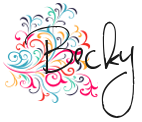This year my team got together and started brainstorming a way to use data more effectively. Since it is a valuable necessity to help us create classroom and individual goals, we decided that it would be even more effective to get our students involved. This year our students will use Data Notebooks to collect their own data.
 |
| (Click on the image to find my Student Data Notebook download) |
Umm... what else are they supposed to do with it? We, teachers have been trained to use our data to reflect...on our teaching practices, on our students' growth, on what techniques might help each student pick up that tough concept. It just makes sense that if reflecting and goal setting helps us be more effective teachers, then the same should be true for our students.
Not only will using data notebooks help raise your students' awareness of where they are, but it will also empower them to take control of their own learning. Collecting, analyzing, and reflecting on their personal data will also help your students set goals that will help them grow.
Let's get started with the data notebook covers! You can print either version. I used the B&W cover to save ink, and most students love to color. This gives them a chance to personalize their notebook just a bit.
While the students dazzle their covers with their coloring skills, you can choose the graphs that you would like to use in your student notebooks. Check out this handy instruction sheet to help you create your data notebooks.
Once
your notebooks are assembled and you’ve prepared the students, you’re ready to
begin using the notebooks. Start with collecting data for one graph. Model
using data to graph information (I would start with one of the class reading
graphs). After you’ve modeled how to graph information, discuss goal-setting
with your class. We usually do multiple lessons on this topic at the beginning
of the school year (you
can check out my other blog links for more info http://eclecticelementary.blogspot.com/2014/08/amazing-grace-goal-setting-for-new-year.html
The
class should work together to create a class goal for growth. For example, “80%
of our class will increase their reading scores by at least one level this
quarter”. Make sure your goals are clear and measurable!
After you have modeled how to use the
graphs, allow students to begin collecting data for personal graphs. I use the
individual reading level graph since it’s similar to the whole class graph.
Each time you add a new type of graph, be sure to model for your students.
Maintaining
Student Notebooks: Be sure to set aside a regular
chunk of time to revisit student notebooks. Your students will need to become
fluent in graphing the data, and regularly reflecting on their goals to make
maximum progress. Some graphs will only
be added to on a quarterly basis, but the students should still be revisiting
their goals several times throughout that period of time.
 I've decided to use weekly spelling graphs, in addition to quarterly reading and math graphs this year. This will give my kiddos that opportunity to become very fluent with their graphing & reflecting skills. Since I give my students their spelling test early in the morning, I can usually get them graded and returned prior to the end of the day. The students will get nearly instant feedback on their spelling and we can get into a routine of graphing, analyzing and reflecting on our progress!
I've decided to use weekly spelling graphs, in addition to quarterly reading and math graphs this year. This will give my kiddos that opportunity to become very fluent with their graphing & reflecting skills. Since I give my students their spelling test early in the morning, I can usually get them graded and returned prior to the end of the day. The students will get nearly instant feedback on their spelling and we can get into a routine of graphing, analyzing and reflecting on our progress!
Choose the graphs that you want...
Analyze and reflect on that data.
I would love to hear how you use data in your classroom! Feel free to leave a comment below.
Thanks for stopping by!











